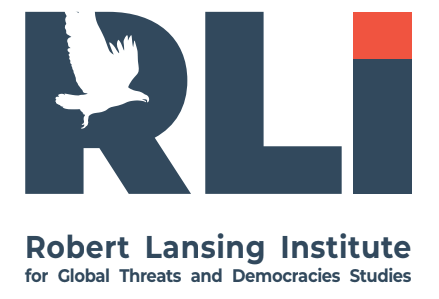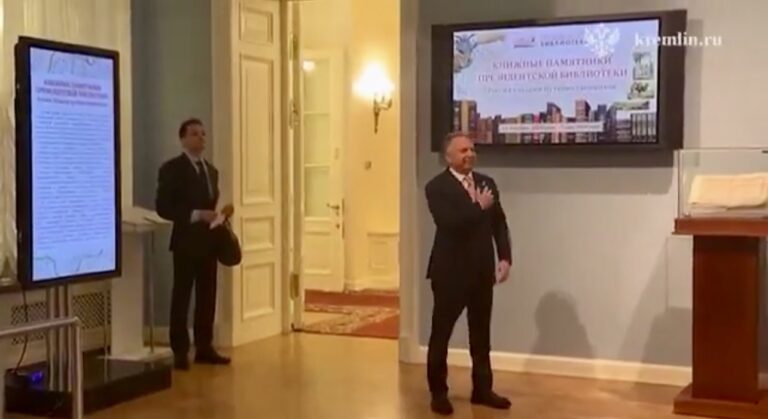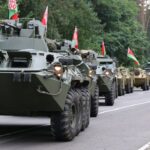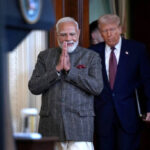Overview of the Visit and Its Diplomatic Context
- U.S. envoy Steve Witkoff conducted a three-hour meeting with President Vladimir Putin on August 6, 2025, just before a Trump-imposed deadline for a ceasefire. The discussion was billed as “productive,” but no substantive agreement emerged
- Trump has indicated a possible summit with Putin (and potentially Zelenskyy) soon. Yet, U.S. officials, including Secretary of State Marco Rubio, remain skeptical due to unresolved obstacles such as territorial disputes and verification mechanisms
2. Russia’s Position: Delaying Tactics Without Commitment
- Putin expressed superficial openness to a ceasefire but framed his stance around “nuances” that require “painstaking research,” effectively delaying consensus
- Senior Kremlin officials, notably Yuri Ushakov, dismissed the ceasefire proposal as a temporary respite that could benefit Ukraine militarily—and therefore unacceptable.
- Russia is demanding sweeping concessions before agreeing, including Ukrainian neutrality, cessation of NATO ambitions, and full recognition of its claims over occupied Ukrainian regions. Ukraine has rejected these terms outright.
3. Strategic Intent: Russia Is Not Serious About Ceasefire
- We see Russia’s actions as a deliberate stalling tactic, using bilateral talks to slow down progress while continuing its military operations.
- Moscow is confident in its battlefield position and expects Western military support for Ukraine to wane, further reducing incentive for peace.
- The U.S. team, led by Witkoff, has been criticized for being outmatched by Russia’s more experienced negotiators. This imbalance gives Moscow the upper hand in diplomatic negotiations.
4. Political Maneuvering and Perception Management
- Witkoff’s public comments, including repeated Kremlin narratives about referenda and Russian-speaking populations, have prompted criticism in Europe and Ukraine that the envoy is echoing Russian propaganda.
- Zelenskyy and European leaders warn against being misled by ambiguous Russian statements that avoid genuine ceasefire commitments.
5. Summary of Key Findings
| Element | Observation |
| Russia’s Stance | Refuses an unconditional ceasefire; sets preconditions to delay or derail talks |
| Negotiation Strategy | Uses ambiguity and setbacks in negotiation to solidify battlefield gains |
| U.S. Leverage | Limited; pressure hinged on sanctions and potential summit talks |
| Media Messaging | Russia maintains control of the narrative; the U.S. risks legitimacy for talking points |
6. Implications and Recommendations
Implications:
- Russia’s obstructionism underscores its intent to prolong the conflict until it achieves a strategic upper hand.
- Without concrete certification mechanisms or mutual verification terms, ceasefire proposals are unlikely to materialize.
Recommendations:
- Maintain Sanction Pressure
U.S. must follow through on threats targeting Russia’s oil exports and associated networks to increase the cost of non-compliance - Deter Symbolic Diplomacy
Ensure any summit with Putin offers real progress and enforce limits—including Ukrainian presence and alignment with EU and NATO partners. - Support Ukraine’s Agency
Amplify Ukraine’s voice in all negotiations and avoid sidelining Kyiv in U.S.-Russia conversations. - Expose Delay Strategy
Publicly frame Russia’s negotiation posture as cynical stalling, reducing international goodwill for Moscow.
Witkoff’s visit highlighted a familiar dynamic: Russia appearing open to peace while tactically avoiding commitments. Without stronger leverage, firm conditions, and equitable negotiation partners, Moscow is unlikely to commit to a ceasefire or genuine diplomacy. The path forward depends on strategic pressure, alliance cohesion, and bolstering Ukraine’s position at the table.
Russia pushes the disinformation narrative that Ukraine is delaying or rejecting prisoner-of-war (POW) exchanges for several strategic reasons. This disinformation serves both external (international) and internal (domestic) objectives, and is tightly aligned with the Kremlin’s information warfare strategy.
1. Shifting the Blame
By accusing Ukraine of blocking or delaying POW exchanges, Russia attempts to absolve itself of responsibility for:
- The poor treatment of Ukrainian POWs, including torture and unlawful detention;
- The delays in repatriating Russian soldiers, which causes unrest among Russian families;
- Violations of the Geneva Conventions, especially regarding ICRC access.
➡️ Strategic goal: Shift international condemnation away from Moscow and place the moral burden on Kyiv.
2. Discrediting Ukraine’s Humanitarian Image
Ukraine has consistently portrayed itself as adhering to international law, particularly in:
- Humane treatment of Russian POWs;
- Cooperation with the Red Cross;
- Initiatives like “Bring Kids Back UA” and POW return campaigns.
By pushing disinformation about Ukraine allegedly refusing exchanges, Russia tries to undermine this humanitarian credibility, especially in:
- The Global South, where the Kremlin seeks neutral or sympathetic allies;
- Western public opinion, to fuel “both sides” narratives.
3. Domestic Propaganda for Russian Families
As more Russian soldiers are captured or go missing, pressure grows on the Kremlin from:
- Relatives of POWs, especially mothers;
- Veteran and nationalist groups, demanding more active repatriation;
- Opposition voices, asking why Russia can’t bring its soldiers home.
Disinformation accusing Ukraine of obstruction:
- Calms internal dissent by blaming the “enemy”;
- Presents Russia as willing to negotiate “in good faith”;
- Fuels public anger against Ukraine and justifies ongoing war efforts.
4. Destabilizing Ukrainian Society
Some of these narratives are aimed directly at Ukrainians, especially:
- Families of Ukrainian POWs, who may lose trust in their government;
- The military community, creating internal pressure on Zelensky’s team;
- Promoting mistrust and division, especially through Telegram and other social platforms.
➡️ Key tactic: Undermine morale by suggesting that Ukrainian authorities are not doing enough to return their own defenders.
5. Sabotaging Mediation Efforts
Mediators like Turkey, the UAE, Qatar, or the Vatican have been involved in facilitating POW exchanges. Russian disinformation:
- Distorts the facts, claiming Russia is cooperative while Ukraine sabotages deals;
- Seeks to confuse or discourage mediators by creating a false sense of futility;
- Attempts to control the narrative in case a deal fails — pinning blame preemptively on Ukraine.
6. Building Grounds for Asymmetric Retaliation
In some cases, Russia may delay or halt POW exchanges deliberately and then:
- Justify it by claiming Ukraine “did it first”;
- Use the alleged “delay” as an excuse to abuse or relocate Ukrainian POWs, including to penal colonies or intelligence facilities.
Conclusion
Russia’s disinformation campaign around POW exchanges is multifaceted and strategic. It’s not just about one narrative, but about:
- Justifying violations of law,
- Undermining Ukraine’s legitimacy,
- Managing internal dissent, and
- Weakening international support for Kyiv.
This line of propaganda is yet another battlefield in Russia’s hybrid war, weaponizing truth itself.
Kremlin’s Strategic Goals in U.S. Negotiations: What Putin Aims to Gain
1. Elevate Russia’s Status through Direct U.S. Engagement
Russia long desired direct, bilateral talks with the U.S., allowing it to:
- Marginalize Ukraine and European partners
- Legitimize its role as a global powerbroker
This approach reinforces Moscow’s claim that resolution of the Ukraine conflict is a U.S.–Russia bilateral.
2. Leverage U.S. Desire for Quick Wins
Putin is aware of the Trump administration’s appetite for diplomatic breakthroughs. The Kremlin is positioning itself to extract maximal gains by:
- Playing into Trump’s search for a legacy peace deal
- Using personal rapport to extract concessions while offering ambiguity
- 3. Advance Maximalist Objectives While Buying Time
Moscow’s demands remain steadfast:
- Withdrawal of Ukraine from occupied territories
- Ukrainian neutrality and demilitarization
- Recognition of Russia’s annexation of regions like Crimea, Donetsk, and others Russia uses negotiation as a delaying tactic, seeking to exploit time to shape battlefield gains into political.
4. Weaken U.S. Alliances and Shift Global Focus
Documents linked to the FSB outline strategies to:
- Drive wedges between the U.S., EU, and China
- Offer U.S. economic opportunities in occupied regions to disrupt Western unity
5. Foundation to Normalize Relations and Reduce Sanctions Pressure
Beyond Ukraine, Moscow seeks:
- Restoration of diplomatic missions and communications,
- Reviving arms control talks and nonproliferation dialogues,
- Partial sanctions relief and release of frozen Russian assets.
Why the United States Should Proceed with Caution
- Russia Will Likely Stall, Not Commit
Kremlin’s tactics include prolonging talks while deepening asymmetric ]. - Ukraine and Europe Must Not Be Excluded
Any agreement without them violates the principle of “Nothing about Ukraine without Ukraine”, undermining credibility and alliance. - Don’t Sacrifice Long-Term Strategy for Short-Term Symbolism
A rushed deal for optics risks embedding unacceptable concessions. Ukraine’s sovereignty and Western deterrence must remain non-negotiable. - Maintain Pressure Through Support and Sanctions
Continued security aid and economic sanctions must remain in place until Russia makes verifiable steps toward peace.
Summary Table
| Kremlin’s Strategy | U.S. Concern / Response |
| Bilateral talks elevate Russia’s negotiating clout | Must include Ukraine and European partners |
| Use diplomatic engagement to gain concessions | Avoid symbolic breakthroughs without real impact |
| Stall negotiations to consolidate battlefield wins | Maintain pressure until verifiable outcomes materialize |
| Undermine alliances via economic offers | Counter information manipulation; strengthen alliances |




